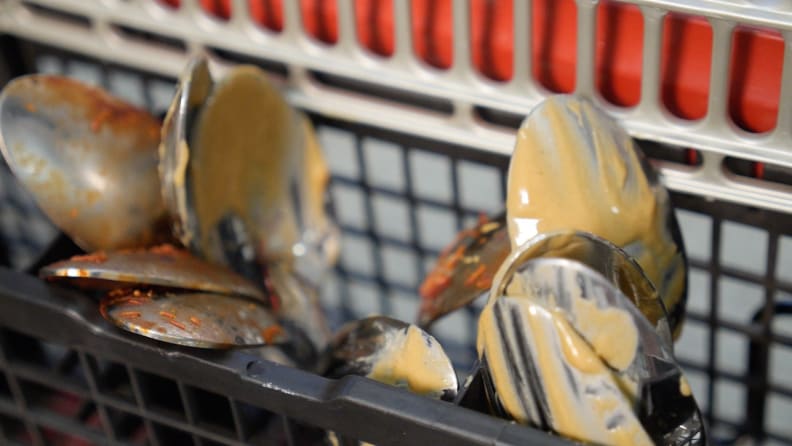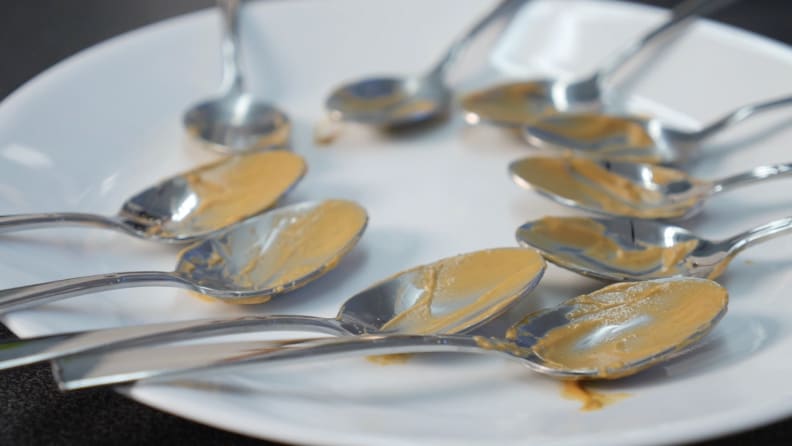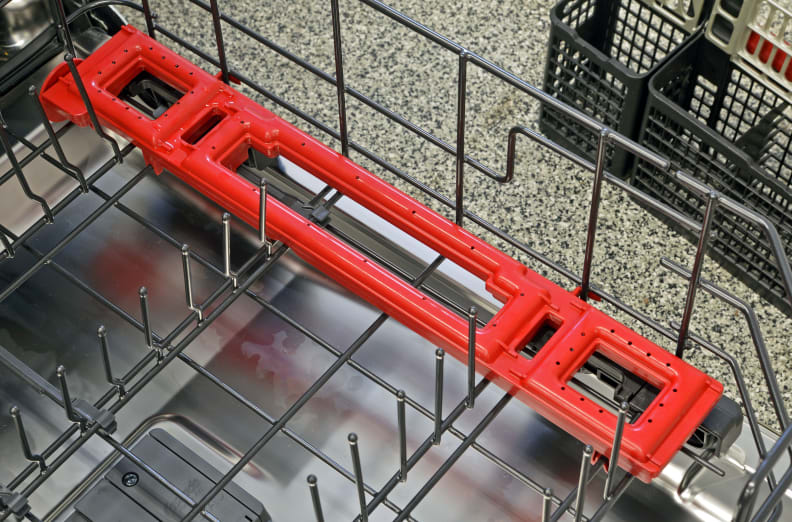Stop sorting silverware—this dishwasher does it for you
Just dump all your knives, forks, and spoons in the basket—let this dishwasher do the work

Products are chosen independently by our editors. Purchases made through our links may earn us a commission.
We've tested hundreds of dishwashers, and nearly every one has done a fine job cleaning silverware. That's because we follow manufacturers' instructions and place silverware into the little slots built into cutlery baskets. Those slots keep silverware separate, which allows water to reach every inch of caked-on food.
Most folks, however, hate those slots. They don't want to touch the tops of dirty silverware, and they don't want to sort their knives, forks, and spoons. So they just flip up the separators and dump all their silverware into a basket. Jumbled together, it doesn't get clean.

Dirty spoons, nested together in the GE's cutlery basket.
That's why GE designed Deep Clean Silverware Jets. Set under the cutlery basket, the jets promise to separate silverware and keep it from clumping together, thereby getting it clean. That means you can do a bad job loading your dishwasher and still get clean cutlery.
It's a pretty impressive claim, which is why we conducted a special test to see if it really works. We decided to test both approaches, using two GE dishwashers: One with Deep Clean Silverware Jets, and one without.
First, we coated 60 identical spoons with some of most persistent stains we could think of: baked-on peanut butter, pasta sauce, and oatmeal. We chose spoons for a specific reason: Their shape means they tend to stick together, so it's even harder for a dishwasher to wash dirt off.

We put peanut butter on spoons and left them out overnight.
After letting the stains dry, we loaded 30 spoons into the dishwasher with silverware jets and 30 into a second GE dishwasher without silverware jets. For the first round, we followed directions and put each spoon in a separate slot, and washed them on Normal. Not surprisingly, both dishwashers had no problem getting spoons clean, though the dishwasher with silverware jets got all spoons spotless while the machine without silverware jets left some debris behind on six spoons.

GE's new Deep Clean Silverware Jets proved to be more than a match for our toughest stains—regardless of whether you load the cutlery basket the right way or not.
On the second test, however, we threw the spoons in loosely, letting them nest in each other where they fell. According to GE's research—and our own observations—this is how most Americans load their dishwashers.
As you can see in the video, after running a Normal cycle, all 30 spoons in the PDT855S came out perfectly clean. For the other GE, 14 spoons remained dirty. That’s a huge difference, and proof that the Deep Clean Silverware Jets actually work.
Of course, you don't have to buy a fancy new dishwasher to get clean silverware—you just have to follow directions.
To find out how GE's newest dishwasher performed in our tests, you can read the full review of the GE Profile PDT855S.
